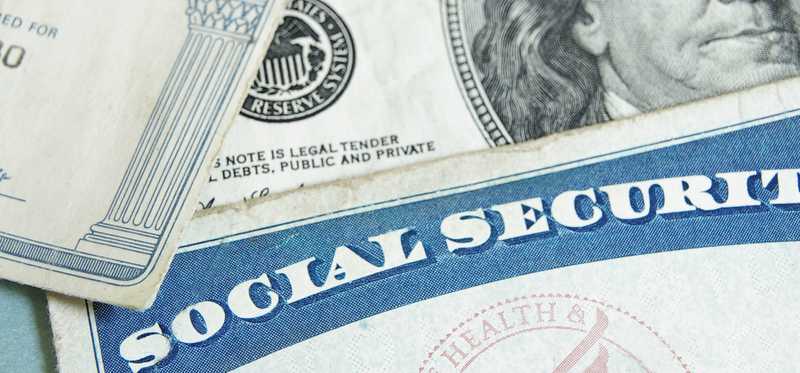10 Ways to Retire Early

10 Ways to Retire Early
Early retirement is possible
These days, retiring at all might seem like a stretch, let alone retiring early. But people manage to do it every year. It takes careful planning and diligent saving, often from a young age, but it's doable if you're motivated enough.
Everyone defines early retirement differently, so your first step is to figure out what that means to you. Then follow these 10 tips to get there.
5 Winning Stocks Under $49
We hear it over and over from investors, “I wish I had bought Amazon or Netflix when they were first recommended by the Motley Fool. I’d be sitting on a gold mine!” And it’s true. And while Amazon and Netflix have had a good run, we think these 5 other stocks are screaming buys. And you can buy them now for less than $49 a share! Simply click here to learn how to get your copy of “5 Growth Stocks Under $49” for FREE for a limited time only.
Previous
Next

1. Know how much you need
Theoretically, anyone can retire at any time, but if you want that retirement to be lasting and comfortable, you need to make sure you have adequate savings first. There is no magic retirement number. How much you need depends on personal factors, like how you plan to spend your retirement and how long you believe it will last. Here's a guide to figuring out how much you need for retirement.
Once you know how much your retirement will cost, you can come up with a plan to reach that goal. If you find your plan isn't feasible, make adjustments until you find a plan that will work for you.
ALSO READ: Here's How Much You'll Need to Save to Retire a Millionaire By Age 50
Previous
Next

2. Trim your expenses
Reducing your costs gives you more cash to put toward your future. If you maintain a frugal lifestyle in retirement, you can also reduce how much money you need to cover your living expenses.
Look over your budget and comb back through bank and credit card statements to see if there are any expenses you could comfortably cut out. You can also look for coupons and other ways to save on items you would normally buy anyway.
Previous
Next

3. Get a side hustle
A side hustle is an easy way to generate some additional income, and some side hustles can turn into full-time jobs in time. There are many options out there, so decide which best matches up with your interest, talents, and availability. Some side hustles may be like second jobs, but others don't require a lot of work on your part once you get your service up and going. Renting out an extra property, for example, requires almost no work from you once you've got the place move-in ready and found tenants.
Just remember you still owe taxes on your self-employment income, so you have to give the government its share. But if you stash some or all of your side hustle income in a tax-deferred retirement account, you can reduce how much your side hustle will raise your tax bill this year.
Previous
Next

4. Pay off your debt
Debt hampers your ability to save for retirement and your other long-term goals, so you should minimize the number of loans you take out and avoid credit card debt altogether, if you can. If you already have debt, pay this off as soon as possible. You may even want to place high-interest credit card debt above retirement savings, unless you have an employer-sponsored retirement plan that offers a match.
Try a personal loan or a balance transfer credit card. If you're cutting your expenses, you can use the additional funds you have to pay down your debts and then put the extra toward retirement. Now's also a great time to refinance an existing loan because banks have slashed interest rates due to the pandemic.
ALSO READ: Have $5,000 or More in Credit Card Debt? Here's How to Lose It
Previous
Next

5. Save as much as you can
After covering your monthly bills and paying off your high-interest debt, stash your remaining cash in a retirement account. Your workplace retirement account is a smart place to begin, especially if it offers an employer match. You're allowed to contribute up to $19,500 to a 401(k) in 2020, or $26,000 if you're 50 or older.
If your employer doesn't offer a retirement account or you've already maxed yours out, go with an IRA instead. You can open one of these with any broker and contribute up to $6,000 in 2020 or $7,000 if you're 50 or older.
5 Winning Stocks Under $49
We hear it over and over from investors, “I wish I had bought Amazon or Netflix when they were first recommended by the Motley Fool. I’d be sitting on a gold mine!” And it’s true. And while Amazon and Netflix have had a good run, we think these 5 other stocks are screaming buys. And you can buy them now for less than $49 a share! Simply click here to learn how to get your copy of “5 Growth Stocks Under $49” for FREE for a limited time only.
Previous
Next

6. Keep your investment fees low
Fees are an unavoidable part of investing and saving for retirement, but you have some control over how much you pay. Actively managed mutual funds, for example, are more expensive than passively managed mutual funds, like index funds, because actively managed funds rely heavily on fund managers to buy, sell, and monitor the assets in the fund. Index funds, on the other hand, are designed to mimic a market index, like the S&P 500, so there isn't as much work for fund managers to do. They can pass that along to you in the form of lower fees.
Look at your prospectus to learn about what fees you're paying on your investments. You may see it listed as a percentage of your assets. Aim to keep this under 1% if you can, and consider switching up your investments if you find you're paying more than you'd like to.
Previous
Next

7. Plan for Social Security
Social Security could facilitate early retirement for some people, if you claim it as soon as you become eligible at 62, but this isn't always the right move. The longer you wait to claim benefits, the larger your Social Security checks become, at least until you hit your maximum benefit at 70. Here's a guide explaining how age affects your checks.
Delaying benefits could also be helpful for those planning to retire early, assuming they have enough personal savings to carry them through the early years of their retirement on their own. Then, when they begin claiming benefits when they're older, those checks will go further and cover more of their expenses. Ultimately, there is no right answer about when to start Social Security, so you must decide what you're comfortable with.
ALSO READ: This Dreaded Social Security Milestone Is Coming in 2021
Previous
Next

8. Plan for health insurance
Those planning to retire before 65 will need a way to cover their medical costs until they're eligible for Medicare. COBRA coverage through your former employer might be an option for a short time, although many people find this expensive. You could also purchase your own health insurance policy.
One thing you shouldn't do is skip health insurance altogether and bank on good luck. A single injury could result in tens of thousands of dollars in medical bills, and that could derail your plans for retirement quickly.
Previous
Next

9. Consider the Rule of 55
One of the difficult parts of retiring before 59 1/2 is that you usually cannot access your tax-deferred retirement savings without paying a penalty, but there are a few ways around this. One is the Rule of 55. This enables you to withdraw funds from your retirement account through your most recent employer if you leave that job in the year you turn 55 or later. But you still can't access the money in your other retirement accounts until 59 1/2.
The 59 1/2 rule is currently waived due to the pandemic, so you can make penalty-free retirement withdrawals this year, regardless of your age. But the penalty will likely return in subsequent years, so you'll need a backup plan, like the Rule of 55, to continue penalty-free distributions.
Previous
Next

10. Try Substantially Equal Periodic Payments (SEPPs)
Substantially Equal Periodic Payments (SEPPs) are another way to access your tax-deferred savings without penalty. This strategy requires you to make equal payments from your retirement account for at least five years or until you turn 59 1/2, whichever is longer. As long as you do this, you won't owe penalties, though you'll still owe taxes on your distributions.
Again, you don't have to do this if you want to take money from your retirement account this year, but SEPPs could come in handy for you next year, unless the government waives the early withdrawal penalty for retirement accounts in 2021 as well.
5 Winning Stocks Under $49
We hear it over and over from investors, “I wish I had bought Amazon or Netflix when they were first recommended by the Motley Fool. I’d be sitting on a gold mine!” And it’s true. And while Amazon and Netflix have had a good run, we think these 5 other stocks are screaming buys. And you can buy them now for less than $49 a share! Simply click here to learn how to get your copy of “5 Growth Stocks Under $49” for FREE for a limited time only.
Previous
Next

Start planning your early retirement
Early retirement isn't for everyone, but if it appeals to you, take the steps discussed here to make it happen. Create a plan -- but remember, it's never set in stone. You might change your mind about retiring early as you age or you might develop different ideas about how you want to spend your retirement, and this will change how much you need to save.
Check in with yourself at least once per year to make sure you're still on track for your goals, and make whatever adjustments are necessary to stay on course. No one said retiring early was easy, but with careful planning, it's definitely possible.
The Motley Fool has a disclosure policy.
Previous
Next
Invest Smarter with The Motley Fool
Join Over Half a Million Premium Members Receiving…
- New Stock Picks Each Month
- Detailed Analysis of Companies
- Model Portfolios
- Live Streaming During Market Hours
- And Much More
READ MORE
HOW THE MOTLEY FOOL CAN HELP YOU
-
Premium Investing Guidance
Market beating stocks from our award-winning service
-
The Daily Upside Newsletter
Investment news and high-quality insights delivered straight to your inbox
-
Get Started Investing
You can do it. Successful investing in just a few steps
-
Win at Retirement
Secrets and strategies for the post-work life you want.
-
Find a Broker
Find the right brokerage account for you.
-
Listen to our Podcasts
Hear our experts take on stocks, the market, and how to invest.
Premium Investing Services
Invest better with The Motley Fool. Get stock recommendations, portfolio guidance, and more from The Motley Fool's premium services.